Quantitative Analysis of Bolt Loosening Angle Based on Deep Learning
Abstract
1. Introduction
2. Related Work
3. Bolt Loosening Detection Method Based on Computer Vision Technology
3.1. Overall Detection Process
3.2. Bolt Detection and Positioning Based on Deep Learning
3.3. Bolt Loosening Identification Based on ORB Image Matching Algorithm
- (1)
- oFAST Feature Extraction Algorithm
- (2)
- rBRIEF Key Point Description Algorithm
- (3)
- Estimating Transformation Matrix Using MLESAC Algorithm
4. Case Study Analysis
4.1. Categorization of Bolt-Loosening Angles
4.2. Bolt-Loosening Recognition Analysis
5. Conclusions
- (1)
- The method effectively identified loosened bolts in steel joint plates by training a bolt detector based on the YOLO algorithm and combining it with the ORB image-matching and MLESAC algorithms. It calculated their loosening angles, thereby proving its feasibility;
- (2)
- The algorithm efficiently processes bolt images obtained from experiments, identifying the location of the bolts, cropping images to include only the bolt targets, and, finally, calculating and marking the loosening angles on the images within less than 5 s, demonstrating the method’s efficiency;
- (3)
- Comparing manually loosened bolt images with computer-synthesized bolt-loosening images, it is evident that the angle values identified by the algorithm nearly match the actual values when the loosening angles of bolts are precisely controlled. The maximum error in loosening angles is approximately ±0.1°, confirming the algorithm’s accuracy in angle calculations.
- (1)
- The algorithm’s processing time has yet to achieve near-real-time efficiency. Further improvements in device configuration and algorithm processing will be made to enhance the recognition performance, aiming for live detection capability;
- (2)
- Most bolt loosening in steel structures involves small angles, but scenarios of 360° or its multiples are not excluded, rendering the current algorithm infeasible. To enhance the practicality of the algorithm, future research will consider classifying bolts based on the length of the screw exposed after loosening, thereby addressing the limitations of the current method;
- (3)
- The issue of failing to consider the variability in tightened bolts’ angles when methods are used in production and installation processes should also be considered. According to the literature [32,33], the Bayesian method, as a typical method to overcome variability, could be considered. Due to the variability in tightened bolts, it is hard to estimate the actual angle of the loosened bolts, so the Bayesian-based method can be applied to update/predict the actual values of angles.
Author Contributions
Funding
Data Availability Statement
Conflicts of Interest
References
- Jiang, Y.; Zhang, M.; Lee, C.H. A study of early stage self-loosening of bolted joints. J. Mech. Des. 2003, 125, 518–526. [Google Scholar] [CrossRef]
- Shi, Y. Comparisons between Chinese and American Standards on Bolted Connection Design. Steel Constr. 2020, 35, 33–56. [Google Scholar]
- Federal Highway Administration (FHWA). National Bridge Inspection Standards; Federal Register; FHWA: Washington, DC, USA, 2004; Volume 69.
- Zhao, X.; Gao, H.; Zhang, G.; Ayhan, B.; Yan, F.; Kwan, C.; Rose, J.L. Active health monitoring of an aircraft wing with embedded piezoelectric sensor/actuator network: I. Defect detection, localization and growth monitoring. Smart Mater. Struct. 2007, 16, 1208. [Google Scholar] [CrossRef]
- Caccese, V.; Mewer, R.; Vel, S.S. Detection of bolt load loss in hybrid composite/metal bolted connections. Eng. Struct. 2004, 26, 895–906. [Google Scholar] [CrossRef]
- Milanese, A.; Marzocca, P.; Nichols, J.M.; Seaver, M.; Trickey, S.T. Modeling and detection of joint loosening using output-only broad-band vibration data. Struct. Health Monit. 2008, 7, 309–328. [Google Scholar] [CrossRef]
- Huda, F.; Kajiwara, I.; Hosoya, N.; Kawamura, S. Bolt loosening analysis and diagnosis by non-contact laser excitation vibration tests. Mech. Syst. Signal Process. 2013, 40, 589–604. [Google Scholar] [CrossRef]
- Martowicz, A.; Sendecki, A.; Salamon, M.; Rosiek, M.; Uhl, T. Application of electromechanical impedance-based SHM for damage detection in bolted pipeline connection. Nondestruct. Test. Eval. 2016, 31, 17–44. [Google Scholar] [CrossRef]
- Fan, S.; Li, W.; Kong, Q.; Feng, Q.; Song, G. Monitoring of pin connection loosening using eletromechanical impedance: Numerical simulation with experimental verification. J. Intell. Mater. Syst. Struct. 2018, 29, 1964–1973. [Google Scholar] [CrossRef]
- Mazzeo, P.L.; Nitti, M.; Stella, E.; Distante, A. Visual recognition of fastening bolts for railroad maintenance. Pattern Recognit. Lett. 2004, 25, 669–677. [Google Scholar] [CrossRef]
- Marino, F.; Distante, A.; Mazzeo, P.L.; Stella, E. A real-time visual inspection system for railway maintenance: Automatic hexagonal-headed bolts detection. IEEE Trans. Syst. Man Cybern. Part C Appl. Rev. 2007, 37, 418–428. [Google Scholar] [CrossRef]
- Liu, L.; Zhou, F.; He, Y. Automated status inspection of fastening bolts on freight trains using a machine vision approach. Proc. Inst. Mech. Eng. Part F J. Rail Rapid Transit 2016, 230, 1629–1641. [Google Scholar] [CrossRef]
- Cha, Y.J.; You, K.; Choi, W. Vision-based detection of loosened bolts using the Hough transform and support vector machines. Autom. Constr. 2016, 71, 181–188. [Google Scholar] [CrossRef]
- Park, J.H.; Huynh, T.C.; Choi, S.H.; Kim, J.T. Vision-based technique for bolt-loosening detection in wind turbine tower. Wind Struct. 2015, 21, 709–726. [Google Scholar] [CrossRef]
- Ramana, L.; Choi, W.; Cha, Y.J. Fully automated vision-based loosened bolt detection using the Viola–Jones algorithm. Struct. Health Monit. 2019, 18, 422–434. [Google Scholar] [CrossRef]
- Huynh, T.C.; Park, J.H.; Jung, H.J.; Kim, J.T. Quasi-autonomous bolt-loosening detection method using vision-based deep learning and image processing. Autom. Constr. 2019, 105, 102844. [Google Scholar] [CrossRef]
- Zhao, X.; Zhang, Y.; Wang, N. Bolt loosening angle detection technology using deep learning. Struct. Control Health Monit. 2019, 26, e2292. [Google Scholar] [CrossRef]
- Zhang, Y.; Sun, X.; Loh, K.J.; Su, W.; Xue, Z.; Zhao, X. Autonomous bolt loosening detection using deep learning. Struct. Health Monit. 2020, 19, 105–122. [Google Scholar] [CrossRef]
- Sun, J.; Xie, Y.; Cheng, X. A Fast Bolt-loosening Detection Method of Running Train’s Key Components based on Binocular Vision. IEEE Access 2019, 7, 32227–32239. [Google Scholar] [CrossRef]
- Wang, C.; Wang, N.; Ho, M.; Chen, X.; Song, G. Design of a New Vision-based Method for the Bolts Looseness Detection in Flange Connections. IEEE Trans. Ind. Electron. 2019, 67, 1366–1375. [Google Scholar] [CrossRef]
- Kong, X.; Li, J. Image registration-based bolt loosening detection of steel joints. Sensors 2018, 18, 1000. [Google Scholar] [CrossRef]
- Zhao, J.; Xu, H.; Dang, Y. Research on bolt detection of railway passenger cars based on improved Faster R-CNN. China Saf. Sci. J. 2021, 31, 82–89. [Google Scholar]
- Redmon, J.; Farhadi, A. YOLO9000: Better, faster, stronger. In Proceedings of the 2017 IEEE Conference on Computer Vision and Pattern Recognition (CVPR), Honolulu, HI, USA, 21–26 July 2017; pp. 6517–6525. [Google Scholar]
- Lan, M.; Liu, Y.; Jin, T.; Gong, Z.; Liu, Z. An Improved Recognition Method Based on Visual Trajectory Circle and ResnetN18 for Complex Power Quality Disturbances. Proc. CSEE 2022, 42, 6274–6286. [Google Scholar]
- Wang, Z.; Deng, S.; Qi, Y.; Zhou, Y. Rail Bolt Component Fault Detection Method Based on YOLO v3. Tech. Appl. 2021, 1, 34–36. [Google Scholar]
- Zhao, H.; Ding, Y.; Li, A.; Sheng, W.; Geng, F. Digital modeling on the nonlinear mapping between multi-source monitoring data of in-service bridges. Struct. Control Health Monit. 2020, 27, e2618. [Google Scholar] [CrossRef]
- Zhao, H.; Ding, Y.; Li, A.; Chen, B.; Wang, K. Digital modeling approach of distributional mapping from structural temperature field to temperature-induced strain field for bridges. J. Civ. Struct. Health Monit. 2023, 13, 251–267. [Google Scholar] [CrossRef]
- Rublee, E.; Raraud, V.; Konolige, K.; Bradski, G. ORB: An efficient alternative to SIFT or SURF. In Proceedings of the 2011 International Conference on Computer Vision, Barcelona, Spain, 6–13 November 2011; pp. 2564–2571. [Google Scholar]
- Rosten, E.; Drummond, T. Machine Learning for High-Speed Corner Detection. In Proceedings of the 9th European Conference on Computer Vision, Graz, Austria, 7–13 May 2006; Springer: Berlin/Heidelberg, Germany, 2006; pp. 430–443. [Google Scholar]
- Calonder, M.; Lepetit, V.; Strecha, C.; Fua, P. Brief: Binary robust independent elementary features. In Proceedings of the 11th European Conference on Computer Vision, Crete, Greece, 5–11 September 2010; Springer: Berlin/Heidelberg, Germany, 2010; pp. 778–792. [Google Scholar]
- Li, J.; Yang, Y.; Zhang, X. An Improved MLESAC Algorithm for Estimating Fundamental Matrix. Comput. Eng. 2012, 38, 214–217. [Google Scholar]
- Zhang, X.; Ding, Y.; Zhao, H.; Yi, L.; Guo, T.; Li, A.; Zou, Y. Mixed Skewness Probability Modeling and Extreme Value Predicting for Physical System Input–Output Based on Full Bayesian Generalized Maximum-Likelihood Estimation. IEEE Trans. Instrum. Meas. 2024, 73, 2504516. [Google Scholar] [CrossRef]
- Zhao, H.; Ding, Y.; Meng, L.; Qin, Z.; Yang, F.; Li, A. Bayesian Multiple Linear Regression and New Modeling Paradigm for Structural Deflection Robust to Data Time Lag and Abnormal Signal. IEEE Sens. J. 2023, 23, 19635–19647. [Google Scholar] [CrossRef]
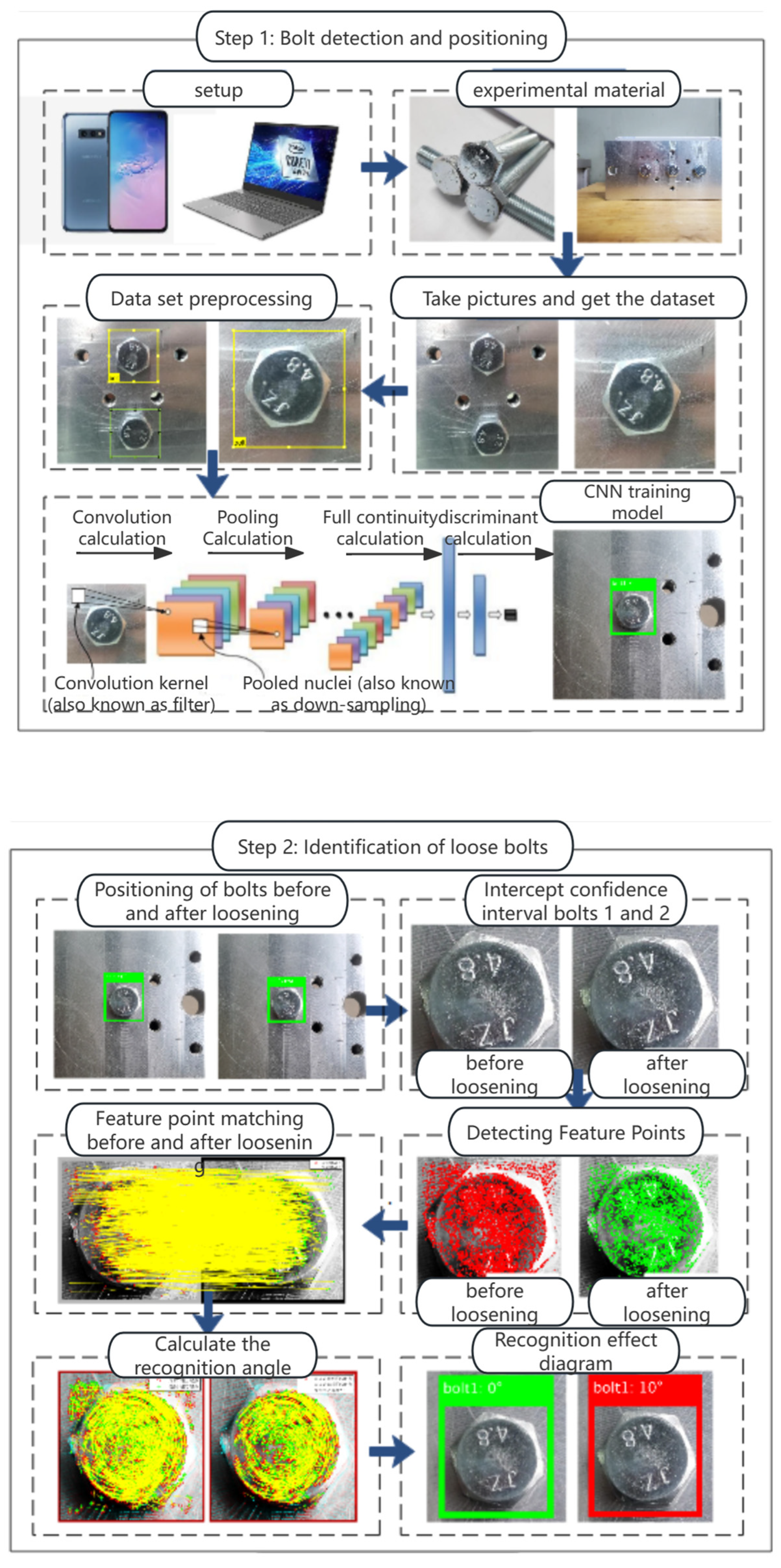
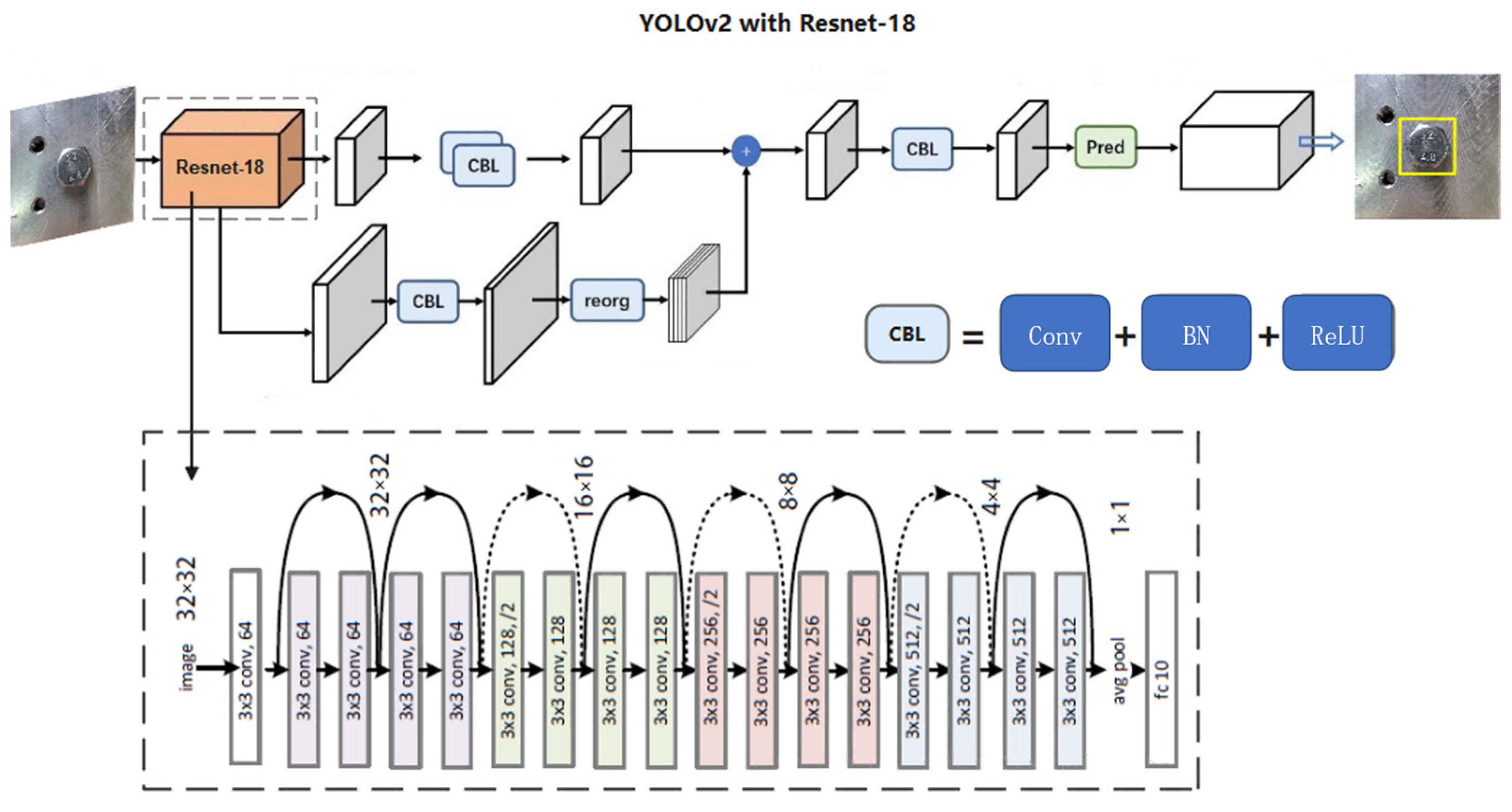
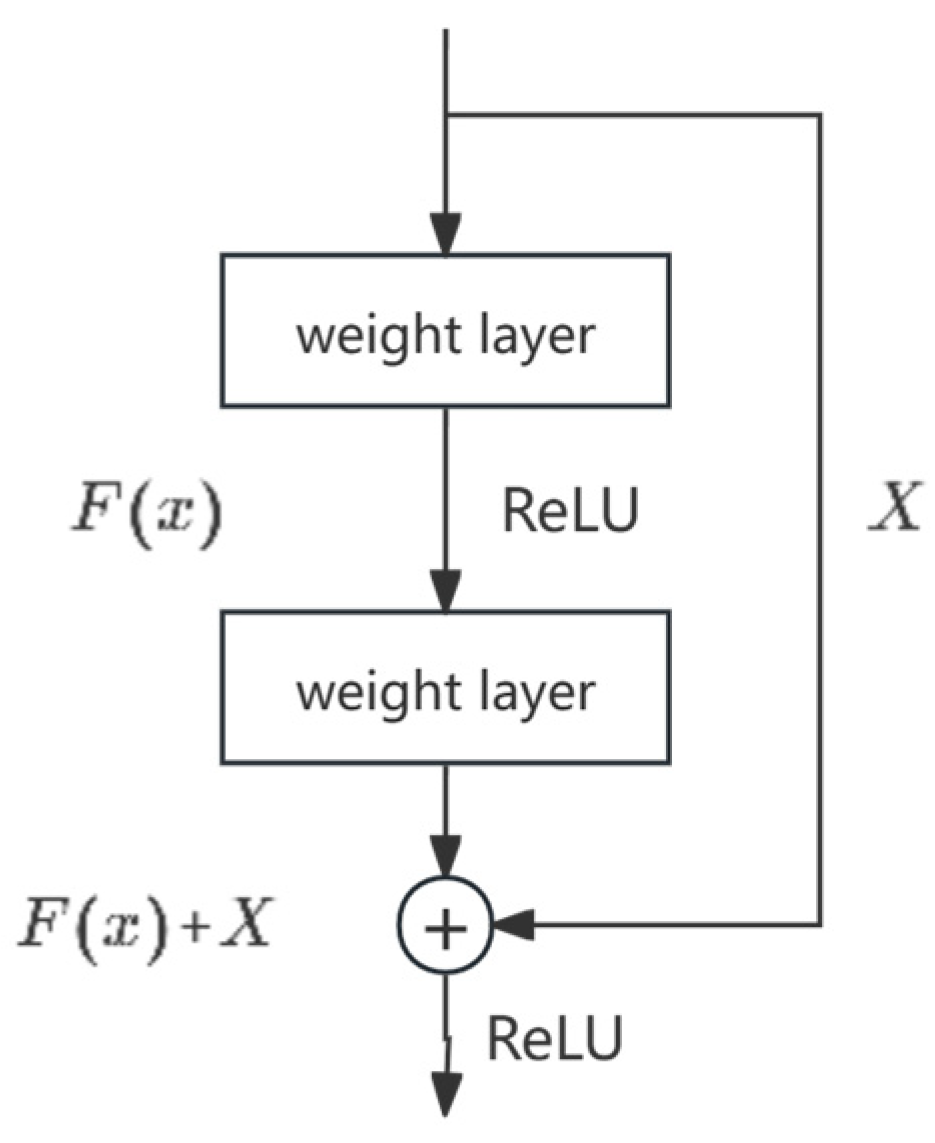
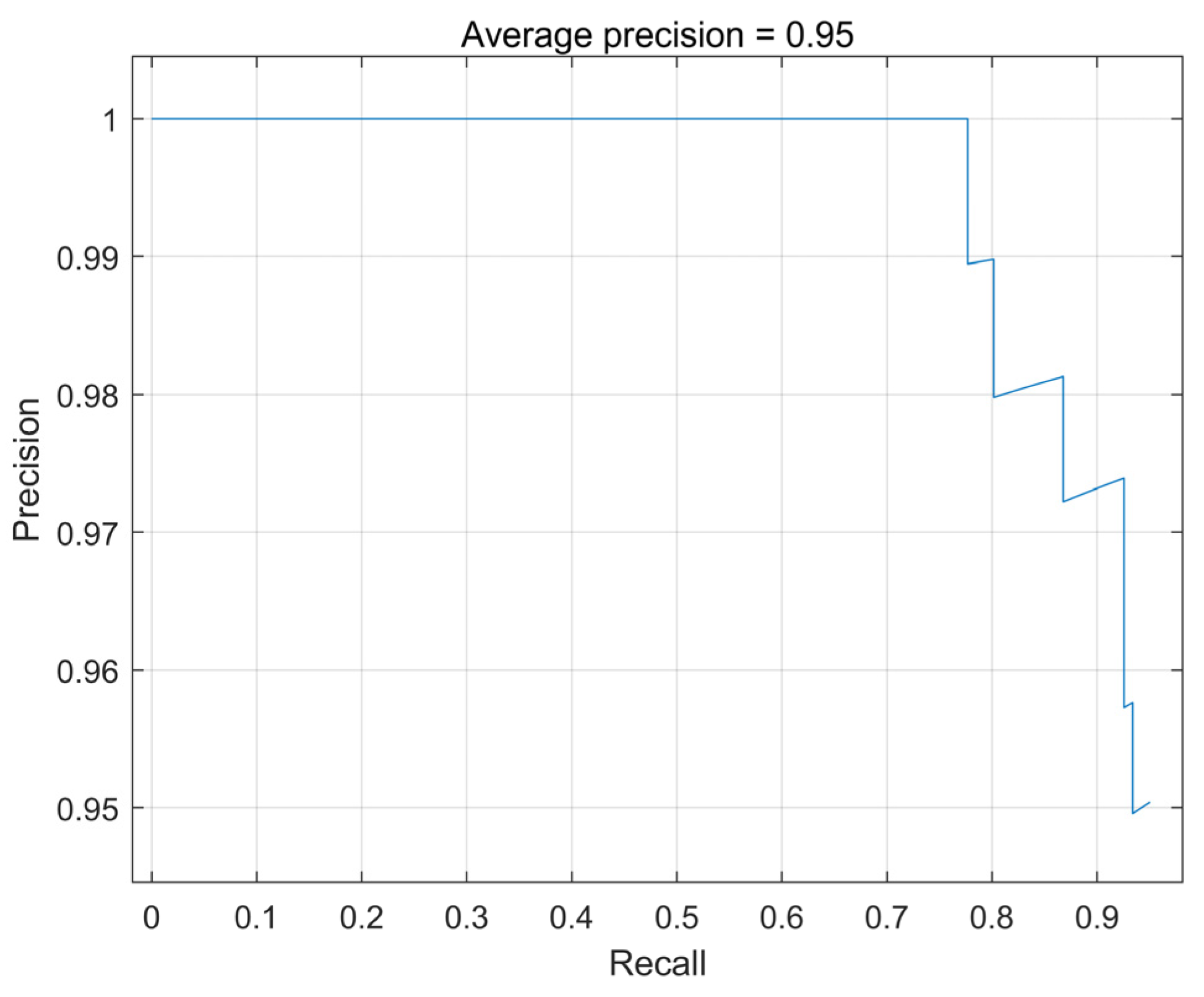

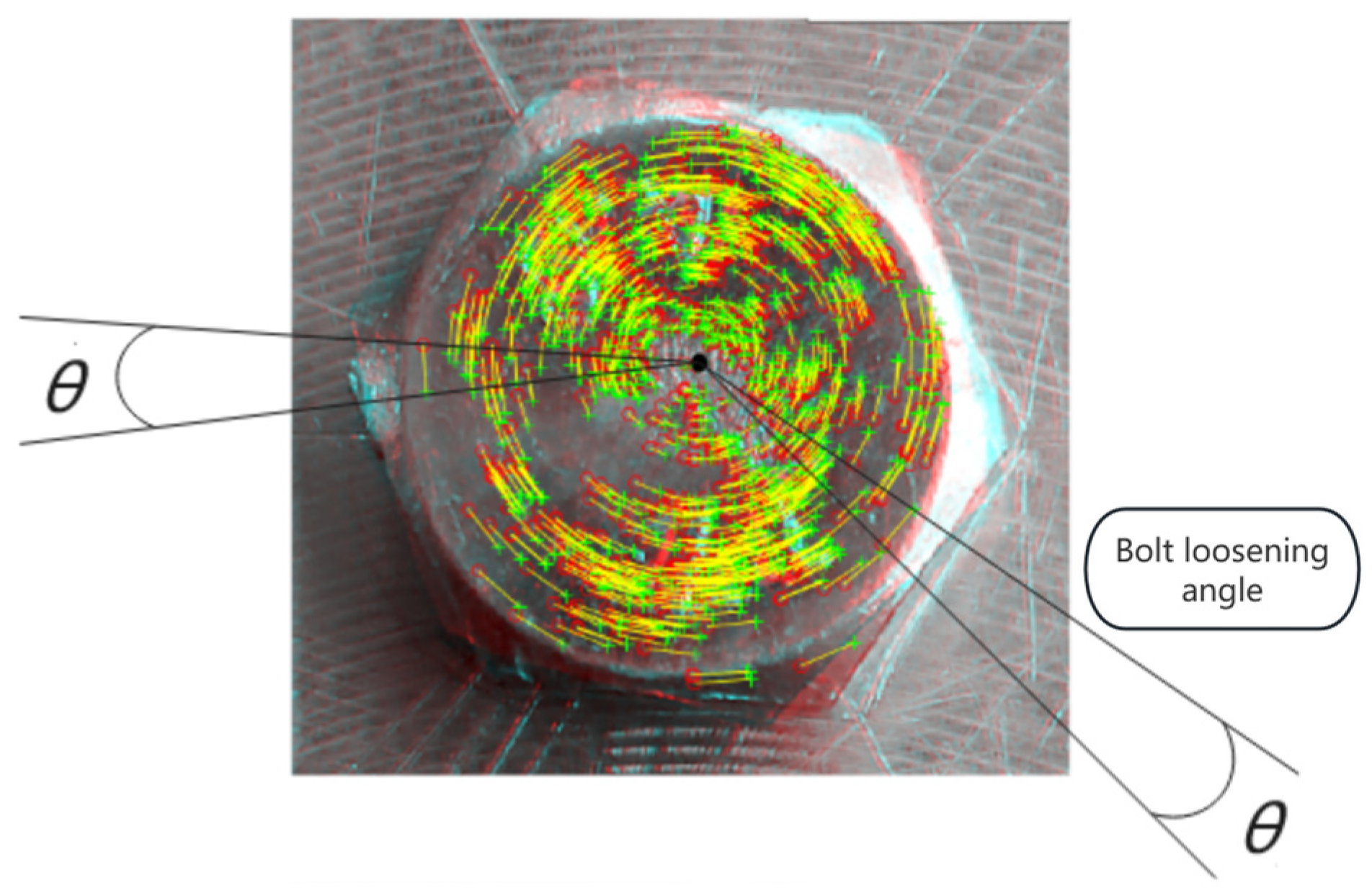
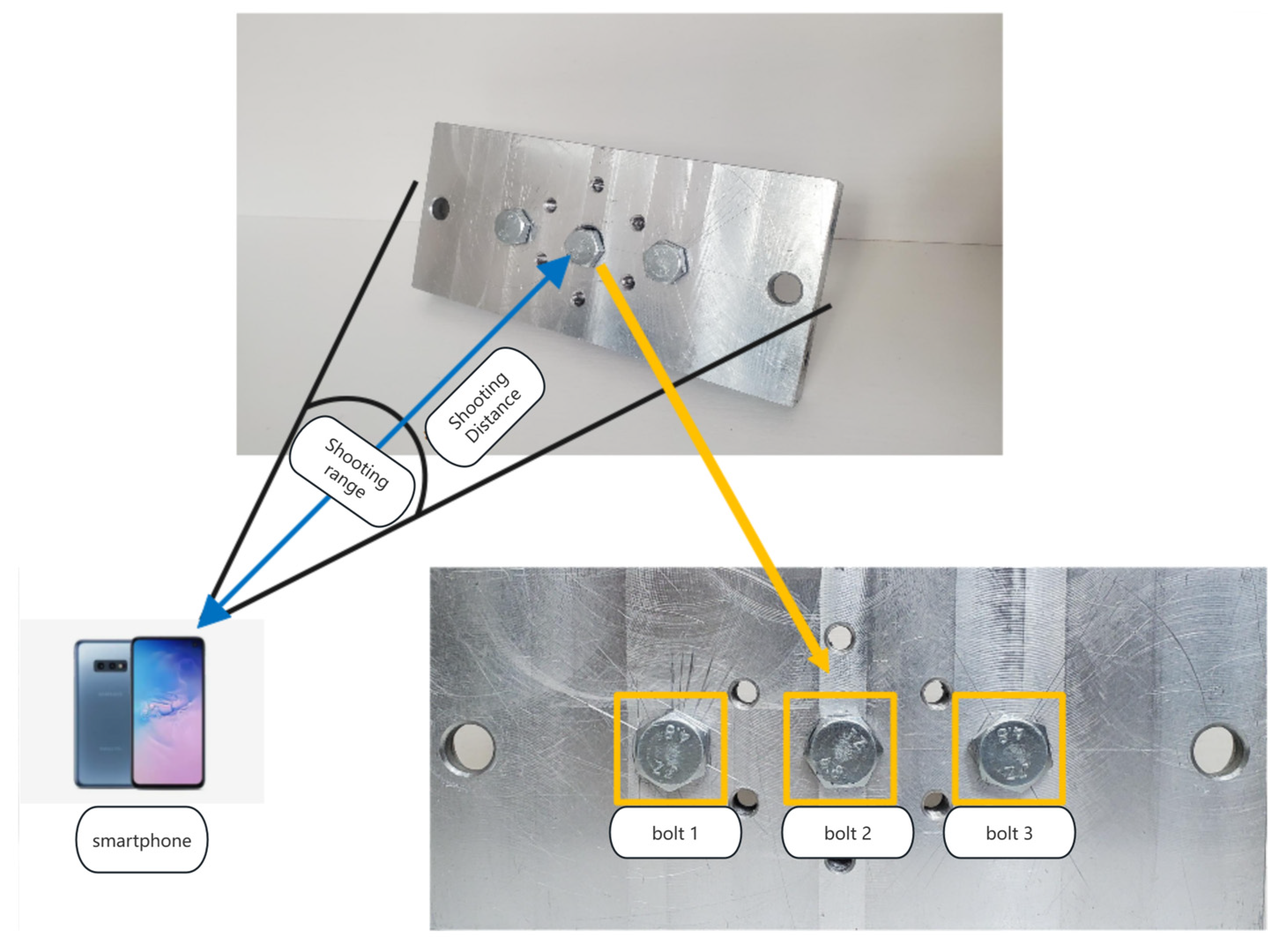
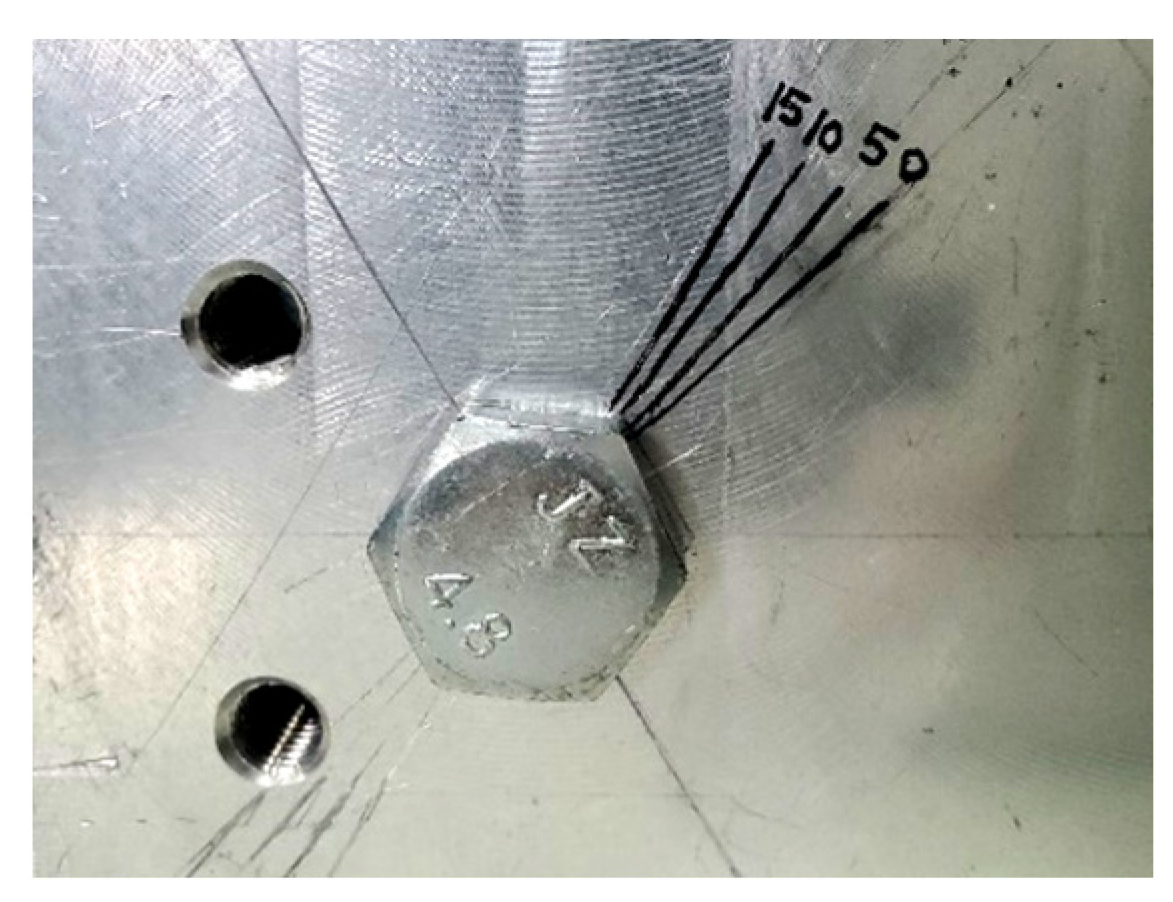
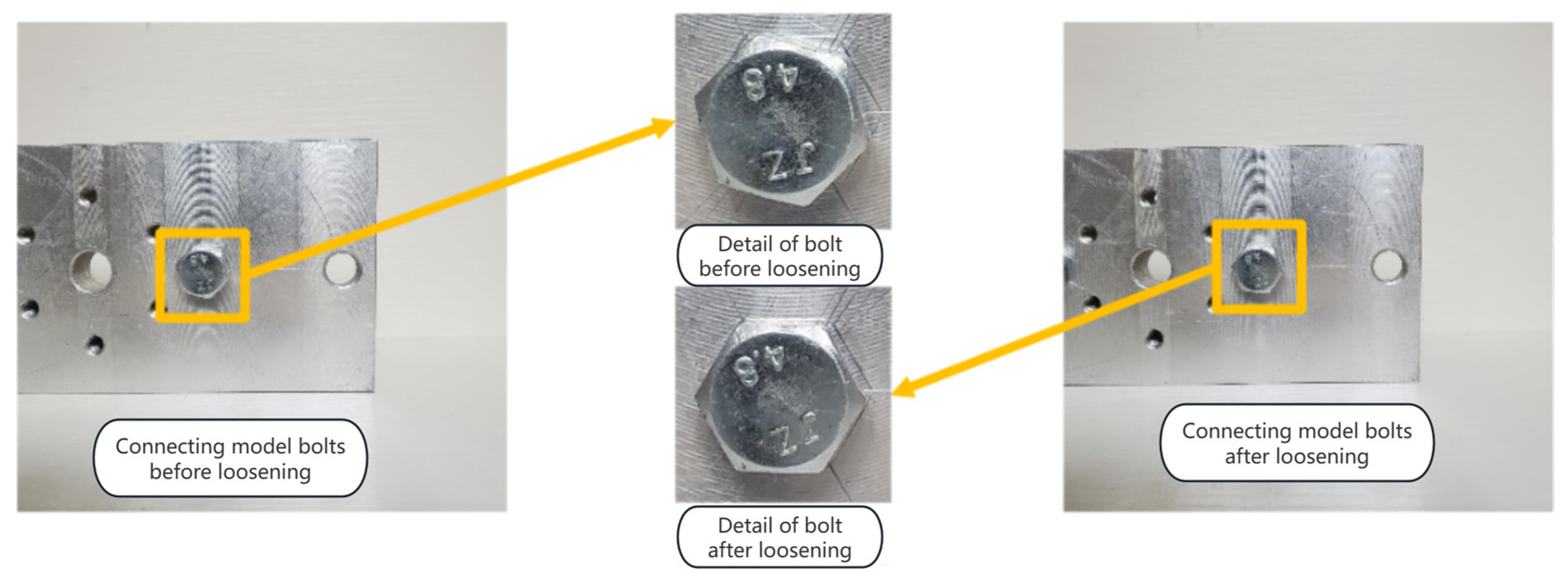
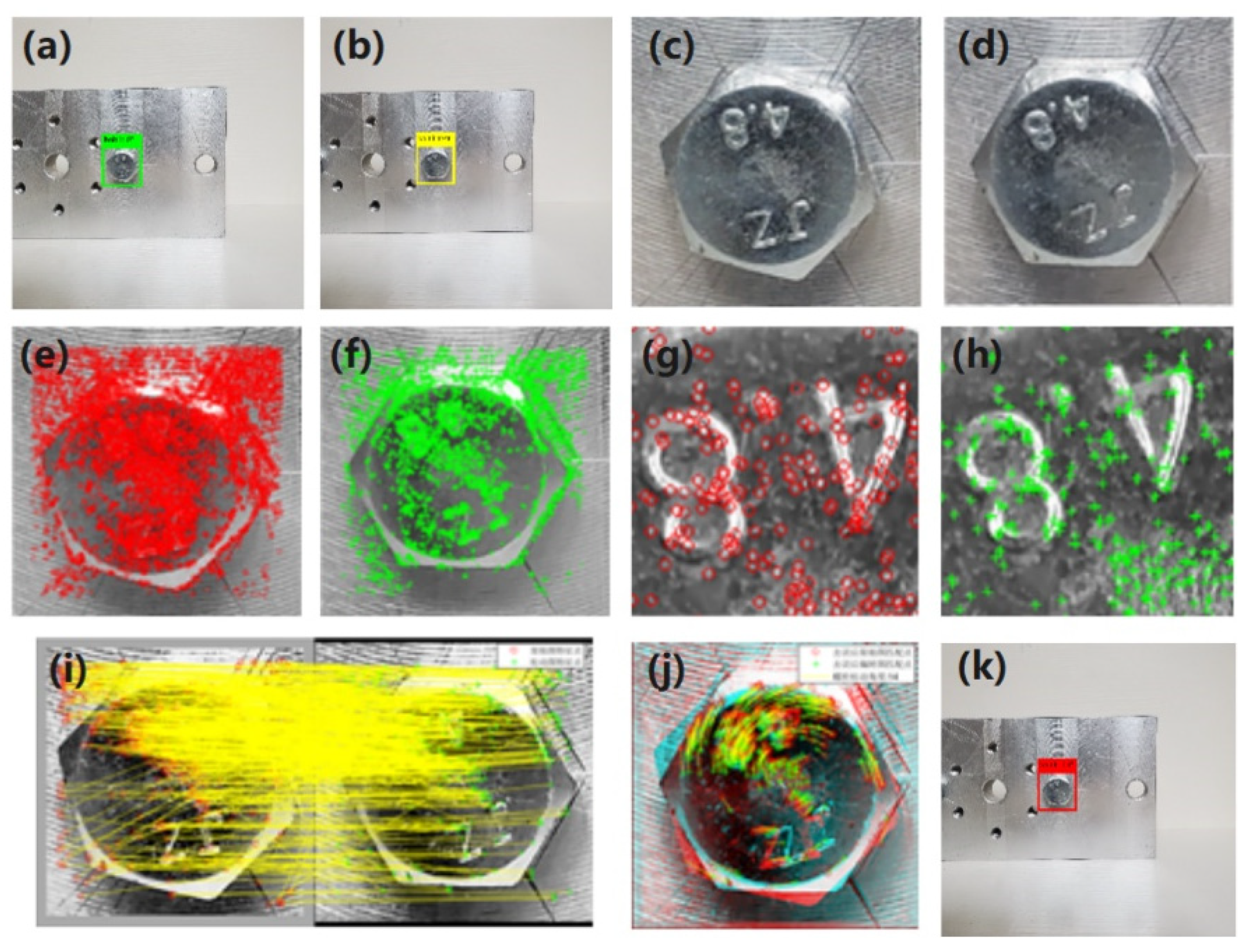
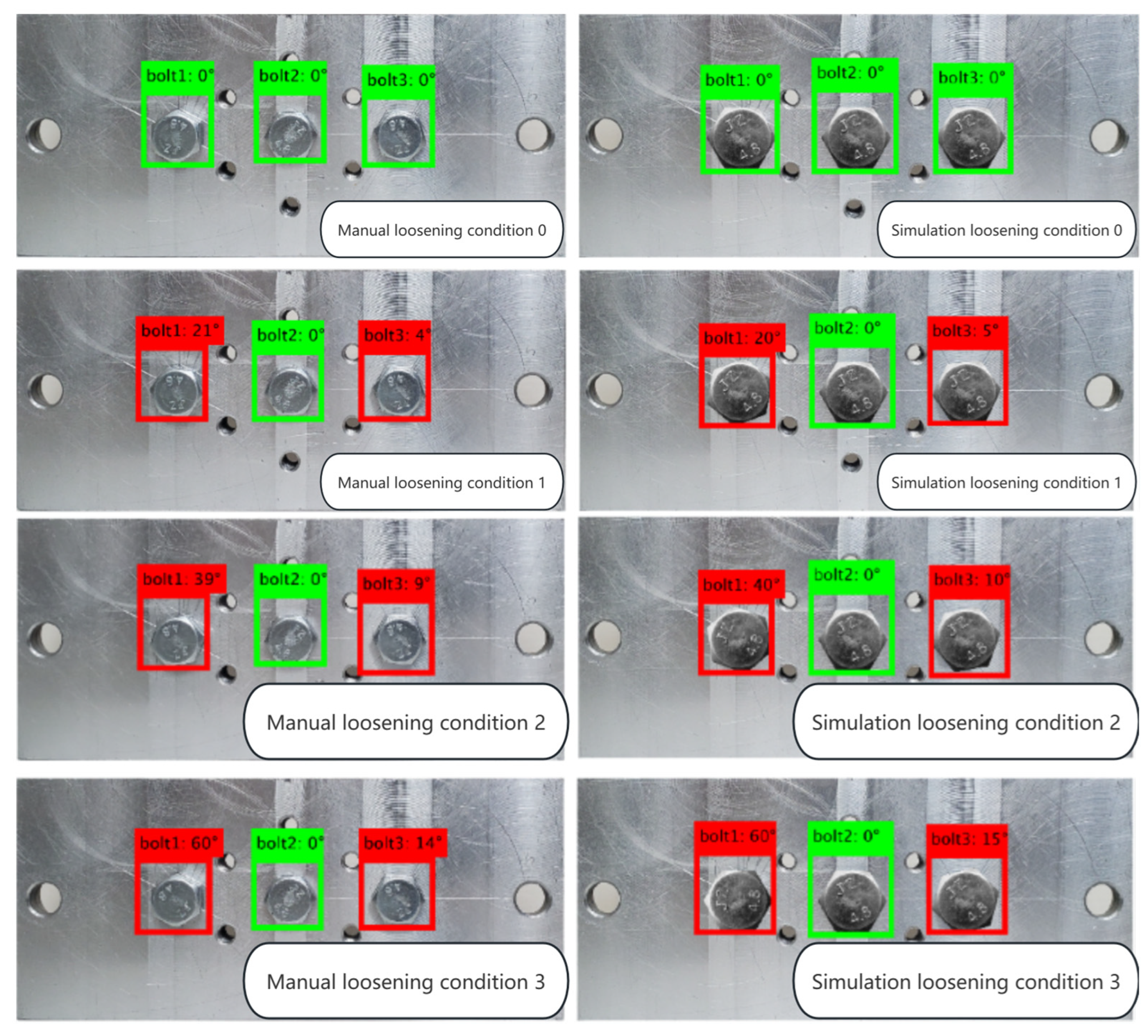
| Catagary | Value |
|---|---|
| Optimizer | SGDM |
| numEpochs | 80 |
| miniBatchSize | 8 |
| LearningRate | 0.001 |
| warmupPeriod | 1000 |
| 12Regularization | 0.0005 |
| penaltyThreshold | 0.5 |
| Conditions | Angle | Bolt 1 | Bolt 2 | Bolt 3 |
|---|---|---|---|---|
| 1 | Manual loosening angle | 20.0000° | 0.0000° | 5.0000° |
| Algorithmic Recognition Angle | 21.3417° | 0.0288° | 4.2185° | |
| error value | 1.3417° | 0.0288° | 0.7815° | |
| 2 | Manual loosening angle | 40.0000° | 0.0000° | 10.0000° |
| Algorithmic Recognition Angle | 39.2511° | 0.0588° | 9.2995° | |
| error value | 0.7489° | 0.0588° | 0.7005° | |
| 3 | Manual loosening angle | 60.0000° | 0.0000° | 15.000° |
| Algorithmic Recognition Angle | 60.3005° | 0.0034° | 13.6516° | |
| error value | 0.3005° | 0.0034° | 1.3484° |
| Conditions | Angle | Bolt-1 | Bolt-2 | Bolt-3 |
|---|---|---|---|---|
| 1 | Manual loosening angle | 20.0000° | 0.0000° | 5.0000° |
| Algorithmic Recognition Angle | 20.0232° | 0.0098° | 5.0346° | |
| error value | 0.0232° | 0.0098° | 0.0346° | |
| 2 | Manual loosening angle | 40.0000° | 0.0000° | 10.0000° |
| Algorithmic Recognition Angle | 39.9675° | 0.0060° | 10.0400° | |
| error value | 0.0325° | 0.0060° | 0.0400° | |
| 3 | Manual loosening angle | 60.0000° | 0.0000° | 15.000° |
| Algorithmic Recognition Angle | 60.0073° | 0.0084° | 15.0066° | |
| error value | 0.0073° | 0.0084° | 0.0066° |
Disclaimer/Publisher’s Note: The statements, opinions and data contained in all publications are solely those of the individual author(s) and contributor(s) and not of MDPI and/or the editor(s). MDPI and/or the editor(s) disclaim responsibility for any injury to people or property resulting from any ideas, methods, instructions or products referred to in the content. |
© 2024 by the authors. Licensee MDPI, Basel, Switzerland. This article is an open access article distributed under the terms and conditions of the Creative Commons Attribution (CC BY) license (https://creativecommons.org/licenses/by/4.0/).
Share and Cite
Qian, Y.; Huang, C.; Han, B.; Cheng, F.; Qiu, S.; Deng, H.; Duan, X.; Zheng, H.; Liu, Z.; Wu, J. Quantitative Analysis of Bolt Loosening Angle Based on Deep Learning. Buildings 2024, 14, 163. https://doi.org/10.3390/buildings14010163
Qian Y, Huang C, Han B, Cheng F, Qiu S, Deng H, Duan X, Zheng H, Liu Z, Wu J. Quantitative Analysis of Bolt Loosening Angle Based on Deep Learning. Buildings. 2024; 14(1):163. https://doi.org/10.3390/buildings14010163
Chicago/Turabian StyleQian, Yi, Chuyue Huang, Beilin Han, Fan Cheng, Shengqiang Qiu, Hongyang Deng, Xiang Duan, Hengbin Zheng, Zhiwei Liu, and Jie Wu. 2024. "Quantitative Analysis of Bolt Loosening Angle Based on Deep Learning" Buildings 14, no. 1: 163. https://doi.org/10.3390/buildings14010163
APA StyleQian, Y., Huang, C., Han, B., Cheng, F., Qiu, S., Deng, H., Duan, X., Zheng, H., Liu, Z., & Wu, J. (2024). Quantitative Analysis of Bolt Loosening Angle Based on Deep Learning. Buildings, 14(1), 163. https://doi.org/10.3390/buildings14010163








